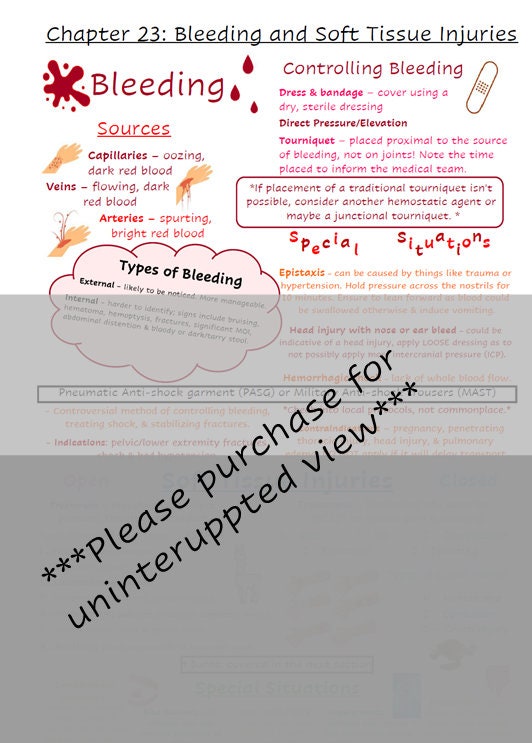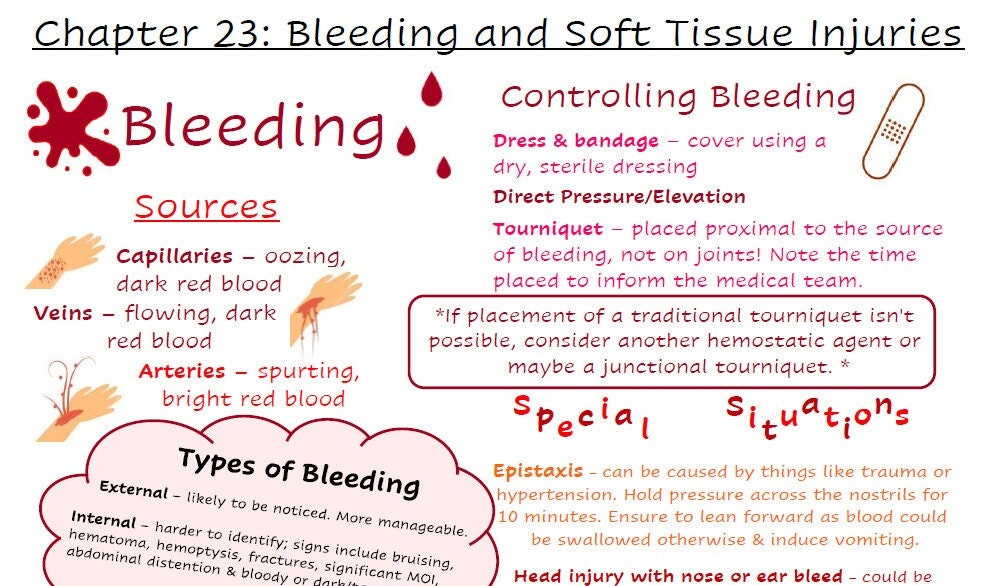Bleeding From Soft Tissue Injuries To The Face: A Comprehensive Guide For Everyday Heroes
Alright, listen up, folks. We’re diving deep into something that’s both serious and super important—bleeding from soft tissue injuries to the face. Let’s face it (pun intended), facial injuries can be scary. They’re not just painful; they’re also visually alarming. But don’t panic yet, because knowledge is power, and we’re here to arm you with the info you need to handle these situations like a pro. Whether you’re a first responder, a parent, or just someone who wants to be prepared, this guide is for you.
Soft tissue injuries are no joke. They can range from minor cuts to severe lacerations, and when it comes to the face, things get extra tricky. The face has a rich blood supply, which means even a small cut can bleed like crazy. So, understanding how to manage bleeding from soft tissue injuries to the face isn’t just a skill—it’s a necessity. Let’s break it down step by step.
Now, before we dive into the nitty-gritty, let’s talk about why this matters. Think about it: you’re at a barbecue, and someone trips, landing face-first on a sharp branch. Or maybe your kid takes a tumble during a soccer game. These things happen, and they happen fast. Knowing what to do in those moments can make all the difference between a scary situation and a manageable one. Ready? Let’s go.
Read also:Dorchester County Detention Center South Carolina A Deep Dive
Here’s a quick roadmap to help you navigate this guide:
- What Are Soft Tissue Injuries?
- Understanding Facial Bleeding
- First Aid for Facial Bleeding
- Common Causes of Facial Soft Tissue Injuries
- Preventing Facial Injuries
- When to Seek Medical Help
- The Healing Process
- Managing Scars
- The Mental Health Impact
- Wrapping It Up
What Are Soft Tissue Injuries?
First things first, let’s clarify what soft tissue injuries actually are. Soft tissues refer to the parts of your body that connect, support, or surround other structures. These include muscles, tendons, ligaments, skin, fat, and blood vessels. When we talk about bleeding from soft tissue injuries, we’re focusing on damage to the skin and underlying tissues.
Facial soft tissue injuries can occur due to trauma, accidents, or even medical procedures. The face is particularly vulnerable because it’s exposed and often involved in physical activities. Plus, the rich blood supply in the face means that even minor cuts can bleed profusely.
Types of Soft Tissue Injuries
There are several types of soft tissue injuries, each requiring different approaches:
- Lacerations: Deep cuts that may require stitches.
- Contusions: Bruises caused by blunt force trauma.
- Avulsions: Tearing away of tissue, often seen in severe injuries.
- Abrasions: Scrapes or grazes that remove the top layer of skin.
Understanding the type of injury you’re dealing with is crucial for proper treatment. Now, let’s move on to the specifics of facial bleeding.
Understanding Facial Bleeding
Facial bleeding can be alarming, but it’s important to stay calm and assess the situation. The face has a dense network of blood vessels, which is why even small cuts can bleed heavily. However, this also means that the face heals relatively quickly compared to other parts of the body.
Read also:Care Provider Hhe No Ckbx Your Ultimate Guide To Understanding And Navigating
Here’s what you need to know about bleeding from soft tissue injuries to the face:
- Bleeding can be arterial (bright red and spurting) or venous (darker and steady).
- Pressure is your best friend in controlling bleeding.
- Cleanliness is key to preventing infection.
Why Does the Face Bleed So Much?
The face is packed with blood vessels, making it highly vascularized. This is great for healing, but not so great when you’re trying to stop the bleeding. The good news is that with proper first aid, most facial bleeding can be controlled quickly.
First Aid for Facial Bleeding
Alright, let’s get practical. If you find yourself dealing with bleeding from soft tissue injuries to the face, here’s what you need to do:
Step 1: Stay Calm. Panicking won’t help anyone. Take a deep breath and assess the situation.
Step 2: Apply Pressure. Use a clean cloth or gauze to apply firm pressure to the wound. Hold it there for at least 5-10 minutes without lifting to check.
Step 3: Elevate the Wound. If possible, elevate the injured area above the heart to reduce blood flow.
Step 4: Clean the Wound. Once the bleeding has slowed or stopped, gently clean the wound with soap and water. Avoid using hydrogen peroxide or alcohol, as these can irritate the tissue.
Step 5: Cover the Wound. Use a sterile bandage or dressing to protect the injury from infection.
What Not to Do
Here are a few things to avoid when treating facial bleeding:
- Don’t remove objects embedded in the wound.
- Avoid using dirty materials to stop the bleeding.
- Don’t ignore signs of infection, such as redness, swelling, or pus.
Common Causes of Facial Soft Tissue Injuries
Facial soft tissue injuries can happen in a variety of ways. Some common causes include:
- Falls and trips.
- Car accidents.
- Sports injuries.
- Assault or violence.
- Medical or surgical procedures.
Each of these scenarios carries its own risks, but the principles of first aid remain the same. Knowing the potential causes can help you take preventive measures to reduce the likelihood of injury.
Preventing Sports-Related Injuries
For those who love an active lifestyle, wearing protective gear is essential. Helmets, mouthguards, and face shields can significantly reduce the risk of facial injuries during sports. Make sure to follow safety guidelines and use equipment that fits properly.
Preventing Facial Injuries
Prevention is always better than cure. Here are some tips to help you avoid facial soft tissue injuries:
- Wear seat belts while driving.
- Use protective gear during physical activities.
- Keep your home and workspace free of trip hazards.
- Teach children about safety and supervision.
By taking these precautions, you can minimize the chances of sustaining a facial injury. But accidents happen, and when they do, it’s important to know how to respond.
When to Seek Medical Help
Not all facial injuries require a trip to the emergency room, but there are certain situations where professional medical attention is necessary. Seek help if:
- The bleeding doesn’t stop after 10-15 minutes of pressure.
- The wound is deep or gaping.
- There’s damage to the eyes, nose, or mouth.
- You suspect a broken bone or fracture.
- There are signs of infection.
Remember, it’s always better to err on the side of caution. If you’re unsure, consult a healthcare professional.
What to Expect at the ER
If you do end up in the emergency room, here’s what might happen:
- A doctor will examine the wound and assess its severity.
- You may receive stitches or other treatments to close the wound.
- Tetanus shots may be administered if necessary.
- Pain management options will be discussed.
The Healing Process
Once the initial treatment is done, the focus shifts to healing. The body is pretty amazing at repairing itself, but there are steps you can take to support the process:
- Keep the wound clean and dry.
- Follow any prescribed care instructions from your doctor.
- Monitor for signs of infection.
- Take over-the-counter pain relievers as needed.
Healing times vary depending on the severity of the injury, but most minor cuts should heal within a week or two. More serious injuries may take longer.
Factors Affecting Healing
Several factors can influence how quickly and effectively a wound heals:
- Age and overall health.
- Nutrition and hydration.
- Smoking and alcohol consumption.
- Underlying medical conditions, such as diabetes.
Managing Scars
Scars are a natural part of the healing process, but they can be minimized with proper care. Here are some tips for managing scars:
- Apply sunscreen to protect the scar from UV damage.
- Use over-the-counter scar creams or gels.
- Massage the scar gently to promote blood flow.
- Consult a dermatologist for advanced treatments, such as laser therapy or steroid injections.
While scars may never fully disappear, they can fade significantly over time with the right care.
Emotional Impact of Scarring
Let’s not forget the emotional side of things. Scars, especially on the face, can affect self-esteem and confidence. It’s important to address these feelings and seek support if needed. Talking to a counselor or joining a support group can be incredibly helpful.
The Mental Health Impact
Facial injuries can have a profound impact on mental health. The sudden change in appearance can lead to anxiety, depression, or even PTSD in some cases. It’s crucial to acknowledge these feelings and seek help if they become overwhelming.
Here are some ways to cope with the mental health effects of facial injuries:
- Talk to friends and family about how you’re feeling.
- Consider therapy or counseling.
- Engage in activities that boost your mood and self-esteem.
- Join support groups for people who have experienced similar situations.
Wrapping It Up
So, there you have it—a comprehensive guide to bleeding from soft tissue injuries to the face. From understanding the basics to managing scars and addressing mental health, we’ve covered everything you need to know to handle these situations confidently.
Remember, knowledge is power. By staying informed and prepared, you can turn a scary moment into a manageable one. And hey, if you’ve learned something new today, why not share this article with someone else? You never know who might need this info.
Got any questions or thoughts? Drop a comment below, and let’s keep the conversation going. Stay safe, stay informed, and most importantly, stay human.


